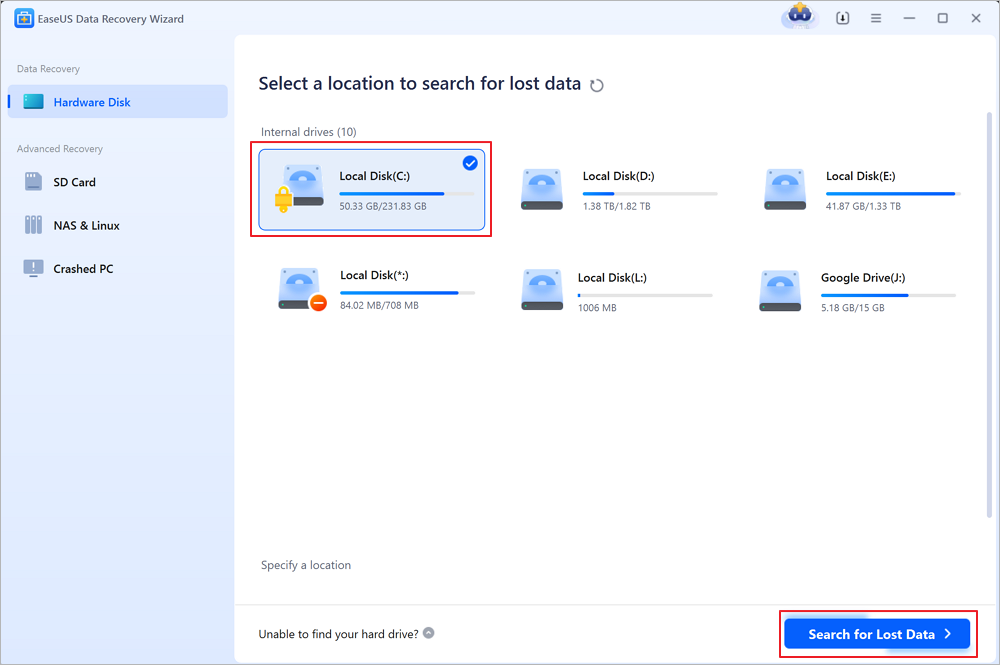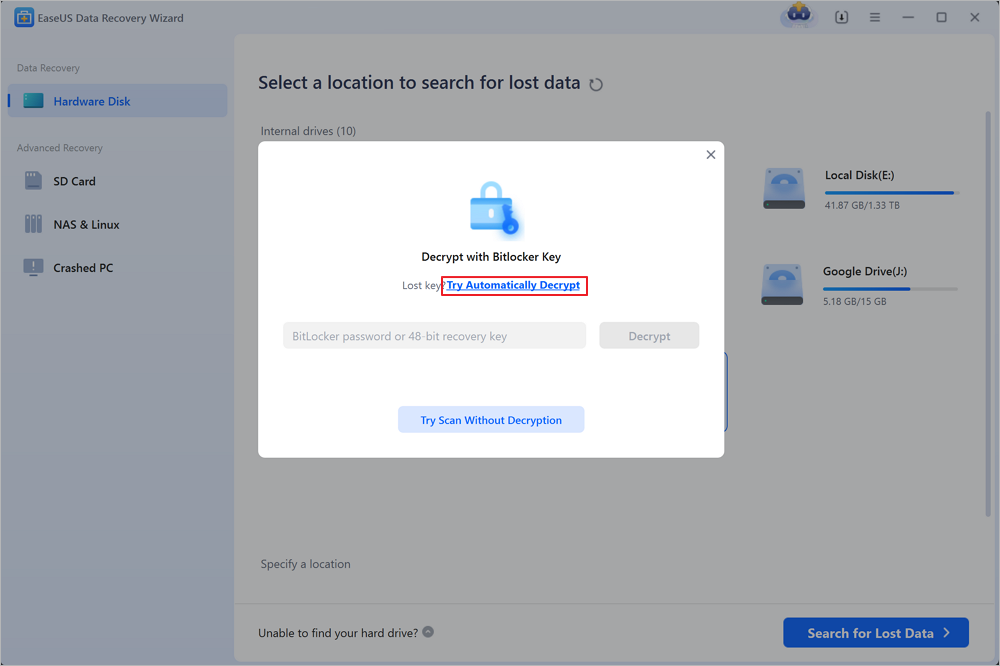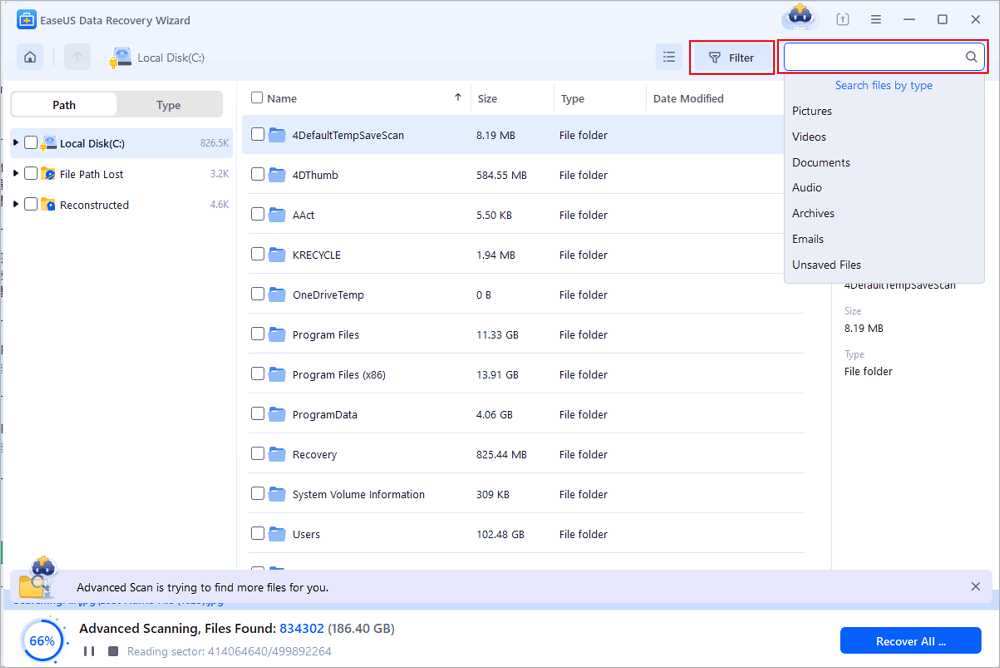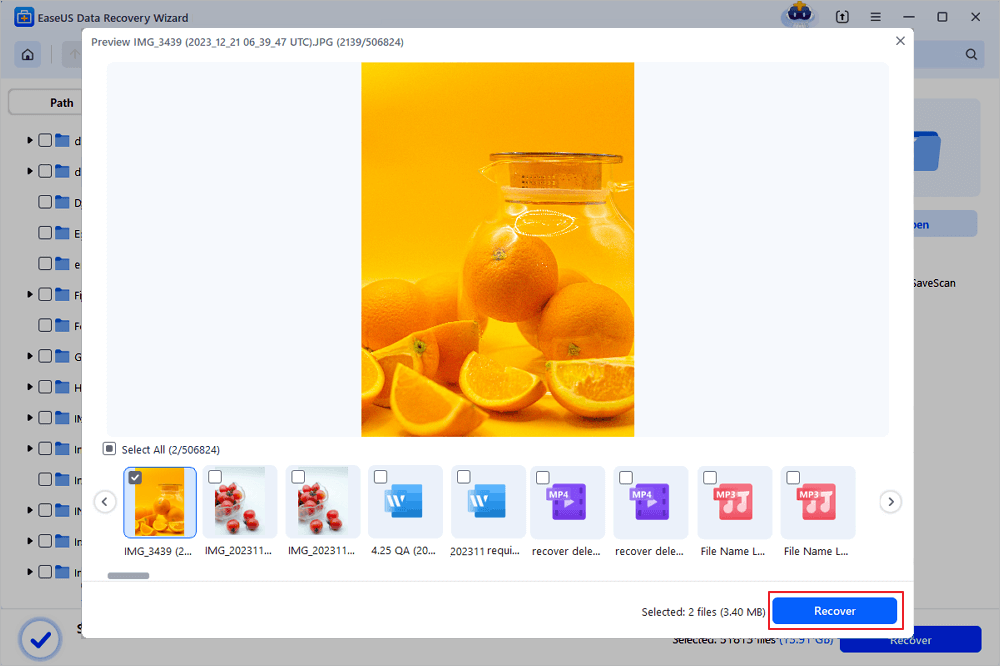Start Your Free Trial!
Sign up to our newsletter, stay updated on news and exclusive offers from EaseUS. Don't worry, if you change your mind, you can unsubscribe at any time, free of charge. We value your privacy (Privacy Policy).
Wondering how to find BitLocker recovery key? Before diving into this question, you must understand a BitLocker recovery key! It's a Windows or Microsoft recovery key, a special one spawned automatically while enabling BitLocker to encode an external HDD or a USB. Such a key unlocks the BitLocker encoded drive upon forgetting the BitLocker password or the "BitLocker password isn't working" condition.
Imagine yourself trying to log into your PC, and instead of asking for your PC's password, your system demands a BitLocker recovery key! What will you do now? Don't fret! This article will navigate you through the top 4 solutions to find your BitLocker recovery key:
| Workable Solutions | Step-by-step Troubleshooting |
|---|---|
| Fix 1. Find BitLocker Recovery Key via Microsft Account | Launch the browser on a device and go to the address below to find the BitLocker recovery key...Full steps |
| Fix 2. Attach to Your Work/School Account to Find BitLocker Key | Launch a web browser from another PC and head to aka.ms, then, sign in with your account...Full steps |
| Fix 3. Find BitLocker Recovery Key from a USB Flash Drive | If you ever saved the BitLocker recovery key to a USB drive, insert the USB flash drive...Full steps |
| Fix 4. Find the BitLocker Recovery Key on a Printout | You might have considered printing your recovery key when the BitLocker was activated...Full steps |
Even if you can't find the BitLocker recovery key with the four methods mentioned below, don't worry! In the fifth part, we will introduce a proven way to unlock a BitLocker drive without a recovery key or password.
This video tutorial details how to find the BitLocker recovery key and unlock the encrypted disk using a handy tool. If you're short on time, you can jump to the information node to watch it:

According to Microsoft, a BitLocker recovery key is an innovative 48-digit numerical password that can be used to unlock your PC if BitLocker can't confirm specifically that the attempt to access the PC is legitimate. One of the best ways to find the BitLocker recovery key is via a Microsoft account. If you set up your system and enable BitLocker yourself, your recovery key will be in your MS account.
You must launch a web browser on a device and type this URL into the address bar:
| https://account.microsoft.com/devices/recoverykey |

Then, you will find your BitLocker recovery key for each device as follows:

If you think this post is helpful, share it with your friends on SNS to help them learn how to find the BitLocker recovery key on a Windows 11 or 10 PC.
In the event that your PC was ever logged into an organization with a work or school account, the company's account might include the recovery key. Your recovery key may be available to you immediately, or you might be required to get in touch with that company's IT assistance. Go through the steps below to attach to your work/school account to find the BitLocker key:
Step 1. Launch a web browser from another PC and head to:
| https://aka.ms/aadrecoverykey |
Step 2. Sign in with your school or work account.
Step 3. Opt for "Devices" and broaden the device for which you must restore the recovery key.

Step 4. Opt for the option "View BitLocker Keys".
Step 5. Find the related recovery key using the key ID and utilize it to unlock the drive using the key ID.
Have you ever saved the BitLocker recovery key to a USB drive? If so, you can recover the key from that USB flash drive! Simply insert the USB flash drive into the encrypted device and adhere to the prompts displayed. After connecting the USB flash drive to your computer, you have no trouble finding the BitLocker recovery key in this way.

Don't worry if you can't find the Bitlocker recovery key or password; this post will guide you in unlocking the encrypted drive without the recovery key! Take a look if needed.
Unlock BitLocker Drive Without Recovery Key and Password Free
Do you want to learn how to unlock the BitLocker drive without a recovery key? Explore step-by-step solutions, including disabling encryption and using CMD, and recover your lost data safely. Read more >>
You might have considered printing your recovery key when the BitLocker was activated. All you need to do is search where you store vital device-related papers. For instance, the key ID and the relevant recovery key are shown in the printout that follows:

If you can't find your recovery key to unlock a BitLocker partition, to avoid data loss, consider using the professional data recovery tool, EaseUS Data Recovery Wizard, to recover BitLocker hard drive data. Unlike ordinary data recovery software, BitLocker data restoration needs a specific BitLocker password and metadata or BitLocker recovery key to decode data.
Sometimes, the BitLocker restoration key and the password won't unlock the BitLocker encoded drive. One of the most probable reasons for a locked BitLocker drive is corruption. In that circumstance, powerful EaseUS data recovery software is needed.
The EaseUS proficient BitLocker data recovery program assists in recovering a BitLocker encrypted drive, no matter if it's corrupted, unsuccessful, misplaced, or erased. Furthermore, as long as the BitLocker metadata remains functional, the recovery key or password is accessible, and the drive's data isn't erased, it permits data to be transferred from a formatted BitLocker-encoded disk.
Check out the following steps to recover a BitLocker encrypted hard drive:
Step 1. Choose the encrypted drive to scan
Launch EaseUS Data Recovery Wizard, and you will see the BitLocker encrypted drive displayed there. Hover the mouse on the BitLocker partition or storage device from which you want to recover data. Then click "Search for Lost Data".

Note: If you don't have a key or password, you can use "Try Automatically Decrypt", which may help you scan your recovery key from your Microsoft account or your C drive, then decrypt the drive without providing your password.

Step 2. Select and preview scanned files
The software will start a quick scan for deleted files and perform advanced scan for more lost files from the BitLocker device. When the process completes, you can apply the "Filter" feature or use the search feature to find the lost files in a short time.

Step 3. Recover lost files from BitLocker encrypted hard drive
After previewing the file, click the "Recover" button to restore deleted or lost files from BitLocker encrypted partition on Windows. You can choose a cloud storage, such as OneDrive, Google Drive, etc., and click "Save" to save your recovered files.

Download this professional data recovery software now! If this software's efficiency enchants you, kindly share the information with your friends on social media.
It might be unsettling to lose ownership of your protected BitLocker storage. However, you can quickly find the BitLocker recovery key using the abovementioned methods. Here, the article has described the methods of finding the BitLocker recovery key using a Microsoft account, attaching it to your Work/School account or USB flash drive, and finding the key on a printout. If you have lost data while trying the fixes above, EaseUS Data Recovery Wizard is the one-stop tool to restore the BitLocker recovery key in a jiffy!
To learn more about this topic, look through the following FAQs:
1. How do I find the BitLocker recovery key?
Using your Microsoft account, you might discover the BitLocker recovery key, which is backed up to your account when you use an MS account to log into the computer.
2. What do I do if I don't have a BitLocker recovery key?
Resetting your device via a Windows recovery method will be necessary if you fail to locate the BitLocker recovery key and reverse the adjustments that made it mandatory. All of your files will be deleted if you reboot your PC.
3. How do you recover the BitLocker key without a Microsoft account?
You can restore the BitLocker key without an MS account with the help of PowerShell. Follow the steps below to restore the key:
Was This Page Helpful?
Brithny is a technology enthusiast, aiming to make readers' tech lives easy and enjoyable. She loves exploring new technologies and writing technical how-to tips. In her spare time, she loves sharing things about her game experience on Facebook or Twitter.
Related Articles
How to Get BitLocker Recovery Key Using CMD ✨
![]() Sherly/2025-01-24
Sherly/2025-01-24
Top 8 SSD Temperature Monitor Software Recommended in 2025
![]() Cici/2025-01-24
Cici/2025-01-24
Steam Deck Format SD Card Grayed Out? How to Fix
![]() Sherly/2025-02-14
Sherly/2025-02-14
Sorry, There Was a Problem Mounting the File - How to Fix?
![]() Jerry/2025-01-24
Jerry/2025-01-24
EaseUS Data Recovery Services
EaseUS data recovery experts have uneaqualed expertise to repair disks/systems and salvage data from all devices like RAID, HDD, SSD, USB, etc.
CHOOSE YOUR REGION
Start Your Free Trial!
Sign up to our newsletter, stay updated on news and exclusive offers from EaseUS. Don't worry, if you change your mind, you can unsubscribe at any time, free of charge. We value your privacy (Privacy Policy).
Start Your Free Trial!
Sign up to our newsletter, stay updated on news and exclusive offers from EaseUS. Don't worry, if you change your mind, you can unsubscribe at any time, free of charge. We value your privacy (Privacy Policy).